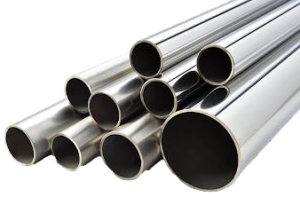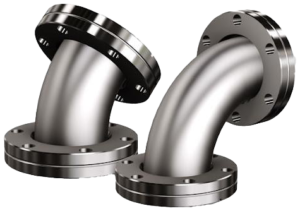Meta Description
Learn about stainless steel forged flanges: types, standards, and key applications in oil, gas, chemical, and power industries.
Introduction
Forged flanges are essential components in piping systems, ensuring strong and leak-proof connections between pipes, valves, and equipment. Compared with cast flanges, forged flanges offer higher strength and better reliability. Stainless steel forged flanges combine the strength of forging with the corrosion resistance of stainless steel, making them widely used in oil & gas, chemical plants, desalination, and power generation projects.
For more product details, you can also visit our DLSS Flanges Product Page.
Types of Forged Flanges
There are several types of stainless steel forged flanges, each designed for different piping needs.
- Weld Neck Raised Face (WNRF): With a long hub and butt weld, it reduces stress concentration and is suitable for high-pressure, high-temperature systems.
- Slip-On Flange (SOFF): Easy to install and align, commonly used in low- to medium-pressure pipelines.
- Blind Flange (BLRF): Used to seal the end of a pipe or vessel. It allows future expansion or inspection.
- Socket Weld Flange (SWRF): Ideal for small-diameter, high-pressure piping systems.
- Lap Joint Flange: Works with stub ends, best for systems requiring frequent dismantling.
Moreover, each type provides specific benefits, which helps engineers choose the right solution for their project.
Key Standards for Forged Flanges
Stainless steel forged flanges must follow recognized standards to ensure safety and compatibility. The most common include:
- ASME B16.5: Covers flanges from 1/2″ to 24″ in size, with pressure classes from 150 to 2500.
- ASME B16.47: Focuses on larger flanges, from 26″ to 60″.
- EN 1092-1: European flange standard.
- DIN Standards: Frequently used in Europe and Asia.
- ISO Standards: Global standards for international projects.
For more details, you can check the official ASME Standards or refer to Wikipedia – Flange.
How Forged Flanges Are Made
The manufacturing process of forged flanges involves several steps:
- Cutting raw stainless steel billets.
- Heating billets to the forging temperature.
- Forging under high pressure for strength and density.
- Heat treatment for improved corrosion resistance.
- Precision machining to required dimensions.
- Surface finishing and marking.
- Quality testing (PMI, UT, RT, hydro test).
As a result, forged flanges are stronger and more reliable than cast flanges, with fewer defects.
Applications of Stainless Steel Forged Flanges
Stainless steel forged flanges are used in a wide range of industries. For instance:
- Oil & Gas: Pipeline connections, offshore rigs, and refineries.
- Chemical Plants: Systems exposed to acids, solvents, and chlorides.
- Power Plants: Steam systems, turbines, and condensers.
- Desalination Projects: Excellent resistance to seawater corrosion.
- Heat Exchangers & Boilers: Withstand high thermal stress and pressure.
In addition, grades such as 316L, 317L, Duplex S32205, and Super Duplex S32750 are commonly chosen for these harsh environments.
Why Choose DLSS
With over 30 years of experience, DLSS supplies forged flanges that meet ASME, ASTM, EN, DIN, and JIS standards. We provide:
- Sizes from 1/2″ to 60″
- Pressure classes from 150 to 2500
- Materials including 304L, 316L, 317L, Duplex, Super Duplex, and Nickel alloys
- Certified quality (PED, ABS, DNV, BV, LR, ISO)
For a real-world example, see our case study: ASME SA182 F317L Forged Flanges for Chemical Plant Project.
Conclusion
Stainless steel forged flanges are vital for reliable piping systems. They ensure durability, corrosion resistance, and safe operation across industries worldwide. By choosing DLSS, clients gain access to strict quality control, international certifications, and technical expertise that ensure every project is delivered with confidence.


